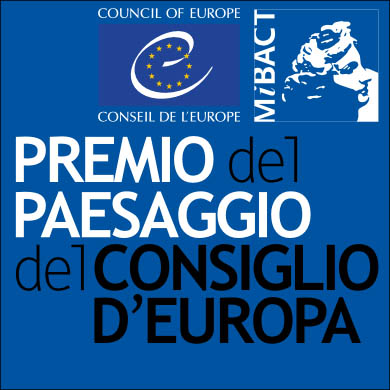On Tuesday, March the 14th, Dolomiti Contemporanee has received a special Mention from MiBACT, following its participation to an open call for the European Council Landscape Award with DC/Progettoborca.
In December 2016, Dolomiti Contemporanee took part in the European Council Landscape Award. It was possible to offer this Candidacy thanks to the Borca di Cadore Municipality, which is a sponsor of Progettoborca since its inception.
We’d like to remind that the Progettoborca platform was created in 2014, and is able to operate thanks to the fundamental support of Minoter, the company that currently owns the former Eni Village of Corte di Cadore, and to the network of partners of Dolomiti Contemporanee, whose numbers are now in the hundreds.
The participation to the Award is an integral part of DC’s planning vision, which constantly works towards the widening of its scope of action, and of the reflection that, ever since 2011, has been carried out in the context of regeneration and care of the Landscape and Heritage through the tools of contemporary art, innovation culture, and participatory networks, keeping always at the centre of one’s good practice a re-innovative and regenerative vision of the territory and of the practice itself.
The 2016/2017 edition of the Award.
The Commission established by the Ministry, chaired by Fabio De Chirico, General Director of Contemporary Art and Architecture and Suburbs, of the MiBACT consists of personalities renowned for their efforts in the culture and landscape branches: Paolo Pejrone, Bartolomeo Pietromarchi, Marino Sinibaldi, Andrea Sisti, Carlo Tosco, Pietro Valentino.
Around one hundred were the projects considered admissible among those partcipating.
On the basis of the actions implemented, with regards to the objectives reached for the requalification of set locations through the enhancement of of all the historic and cultural, material and immaterial, components that make them up, and in consideration of the terms of a sustainable economical development, and civil and cultural growth of local communities, the Commission has selected 38 projects of particular interest.
The winning project was Agri Gentium: landscape regeneration.
Seventeen other projects have received a Special Mention, and among them is Progettoborca, with a thematic Mention.
Below, the MiBACT Mention, which was awarded to Dolomiti Contemporanee in a Ceremony conducted in Rome, at the Ministry, on March 14th 2017, at the presence of the President Mattarella and the Minister Franceschini.
Dolomiti Contemporanee – Progettoborca
Mention: Enchancement of the landscape through contemporary art and architecture
In thanking you for taking part in the Open Call, we have also the pleasure to relay to you that the Commission established fo the evaluation of the projects for the selection of the candidacy for the European Council Landscape Award 2016-2017 has unanimously displayed a great interest for the project “Landscape enhancement through contemporary art and architecture”, which was believed to be deserving of a Mention in the context of the Enchancement of the landscape through contemporary art and architecture.
Natably, it was considered exemplary for the strategies carried out in the recovery of the former Eni Village of Borca di Cadore, an extraordinary example of architecture and company welfare, created in the 50s, open to the public and transformed in a cultural superhub: a cultural, idea-driven, creative and productive research and experimentation centre.

The European Council Landscape Award.
The European Landscape Agreement was signed in Florence in 2000.
Ever since then, the MiBACT has undertaken a series of policies conductive to the tutelage and the enhancement of the Italian landscape.
The European Council Landscape Award, which has a bi-annual frequency, saw its first edition in 2008.
The activity was developed by the Ministry with the knowledge of the strategic potentialities of the venture as an important occasion, directed to the world of culture and to all the individuals operating in the landscape-handling branch, for the promotion and divulgation of the values linked to the landscape.
Advisors were thus pinpointed, as well, as numerous contacts for the scouting of exemplary actions occurring in the Italian territory, among which to find the project to present as candidate for Italy.
All the projects that reach this stage are testimonies of exemplary actions occurring in the Italian territory thanks to sustainable policies of tutelage, enhancement and development. These projects as a whole constitute an important data bank of the Ministry, that documents the various shapes in which landscape culture expresses itself in the Italian territory, experimenting with various approaches and active paths linked to culture and local memory.
Dolomiti Contemporanee and Progettoborca‘s Candidacy: abstract of the mailed project.
Dolomiti Contemporanee is a project of regeneration which ponders over the state of the Landscape in the contemporary perspective, carrying out recovery practices in great abandoned sites of the UNESCO Dolomites’ region. Factories, emblematic and productive sites, villages, they all become active hubs which radiate an enhancing policy of the mountain and the sites themselves, both meant as resources for the territory. The tools used in this good practice are contemporary art, cultural innovation, the creation of large participative networks (over 500 partners). The former Eni Village of Borca di Cadore is an extraordinary active hub of architecture and welfare, known all over the world. Wanted in the 50s by E. Mattei (ENI), and designed by the great architects E. Gellner and C. Scarpa, then partially fell in disuse, the village is now the pivotal point of the project of regeneration of Progettoborca, supported by Minoter, the company that currently owns the site, and by the vast network of DC’s sponsors.
Here the video realized by DC for the European Council Landscape Award: “doing the Landscape”.




